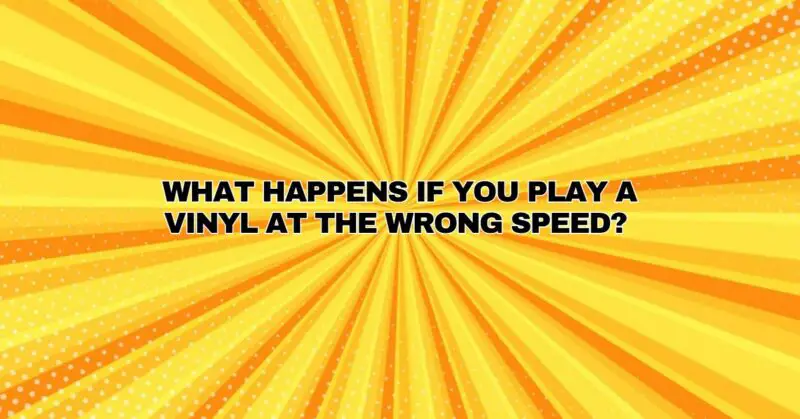Vinyl records are celebrated for their analog warmth and immersive listening experience. However, one crucial aspect of vinyl playback is often overlooked—the correct playback speed. Vinyl records come in various speeds, with 33 1/3 RPM and 45 RPM being the most common for LPs and singles, respectively. Playing a vinyl record at the wrong speed can significantly impact the sound quality and alter the intended musical experience. In this comprehensive article, we will explore the consequences of playing a vinyl record at an incorrect speed and how it affects both the music and the record itself.
The Basics of Vinyl Speeds
Before delving into the consequences, let’s briefly review the standard vinyl speeds:
- 33 1/3 RPM (Revolutions Per Minute):
- Typically used for LPs and full-length albums.
- Provides a playback time of approximately 22 minutes per side for a 12-inch LP.
- Known for its extended playtime and higher fidelity, suitable for long-format music.
- 45 RPM (Revolutions Per Minute):
- Commonly used for singles and EPs (extended plays).
- Offers a shorter playback time, approximately 4-6 minutes per side for a 7-inch record.
- Known for punchy sound and quick access to individual tracks.
Playing at the Wrong Speed: Consequences
Playing a vinyl record at the wrong speed can lead to several undesirable consequences:
1. Altered Pitch:
- Playing a record at a higher speed than intended will result in a higher pitch, making the music sound unnaturally fast and squeaky. Conversely, playing at a lower speed will lower the pitch, creating a slow and sluggish rendition of the music.
2. Unintended Playback Time:
- Playing a 33 1/3 RPM record at 45 RPM will significantly shorten the playback time, while playing a 45 RPM record at 33 1/3 RPM will extend it far beyond its intended duration. This disrupts the sequencing of the music.
3. Loss of Fidelity:
- Incorrect playback speed can distort the music’s frequency response and dynamics. Higher speeds may result in distortion, while lower speeds may cause a loss of detail and dynamics.
4. Damaged Grooves:
- Playing a vinyl record at the wrong speed can potentially damage the grooves. The stylus may skip or jump across the record, causing wear and tear on both the stylus and the vinyl surface.
5. Stylus Misalignment:
- Continuous playback at the wrong speed may lead to misalignment of the stylus (needle). This can affect tracking accuracy and potentially damage the grooves over time.
6. Deterioration of Sound Quality:
- Repeatedly playing records at the wrong speed can lead to a noticeable deterioration in sound quality, affecting the record’s overall condition and playability.
Preserving Your Vinyl Records
To ensure the longevity and optimal performance of your vinyl records, it’s crucial to play them at the correct speed. Always double-check the recommended speed indicated on the record label or packaging. Additionally, invest in a quality turntable with adjustable speed settings to avoid unintentional playback errors.
Conclusion: Maintaining the Sonic Integrity
Playing a vinyl record at the wrong speed may seem like a minor mistake, but it can significantly impact the listening experience and potentially harm both the stylus and the record itself. To fully appreciate the analog warmth and sonic charm of vinyl records, it’s essential to preserve the integrity of the medium by ensuring correct playback speed. Ultimately, the careful handling and proper playback of vinyl records contribute to the continued enjoyment of this timeless musical format.


